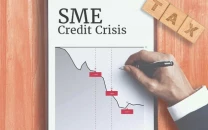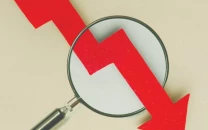Rupee slides in inter-bank market
Earlier in March, local currency hit all-time low at Rs169

The rupee depreciated to Rs168.33 against the US dollar in intra-day trading in the inter-bank market on Tuesday before recovering to close at Rs168.2.
"Earlier in March 2020, the local currency devalued to Rs169 during intra-day trading," remarked Forex Association of Pakistan President Malik Bostan while talking to The Express Tribune.
According to Bostan, the rupee weakened mainly due to the end of Pakistan's oil credit facility provided by Saudi Arabia. He added that the country had to pay back $1 billion to Riyadh, which built pressure on the foreign currency reserves.
Citing that Pakistani officials were on a visit to Saudi Arabia at present, Bostan voiced hope about a positive outcome from the trip, which would ease pressure off the Pakistani rupee.
When the oil credit facility was withdrawn in May, according to Bostan, Pakistan was left with just one week of oil reserves, which caused fuel shortage in the following months.
He underlined that Pakistan was now in a better position with three weeks of oil reserves, which were lending support to the rupee. He expected the dollar to lose 2-3% value in the coming months following positive regional developments.
"Dollar is depreciating all over the world and it may fall significantly against the rupee in the near future," he said.
Endorsing Bostan's views, Pakistan-Kuwait Investment Company Head of Research and Development Samiullah Tariq cited rising imports following normalisation of economic activity in Pakistan as the main reason behind the fall in rupee value.
He lamented that the rupee was weakening persistently despite encouraging remittance data and current account figures. "Latest data suggests that the current account was in surplus in June and the surplus exceeded the trade deficit of Pakistan," he said.
Tariq added that the State Bank of Pakistan might be accumulating foreign currency reserves to achieve its target, which was building pressure on the rupee.



















COMMENTS
Comments are moderated and generally will be posted if they are on-topic and not abusive.
For more information, please see our Comments FAQ